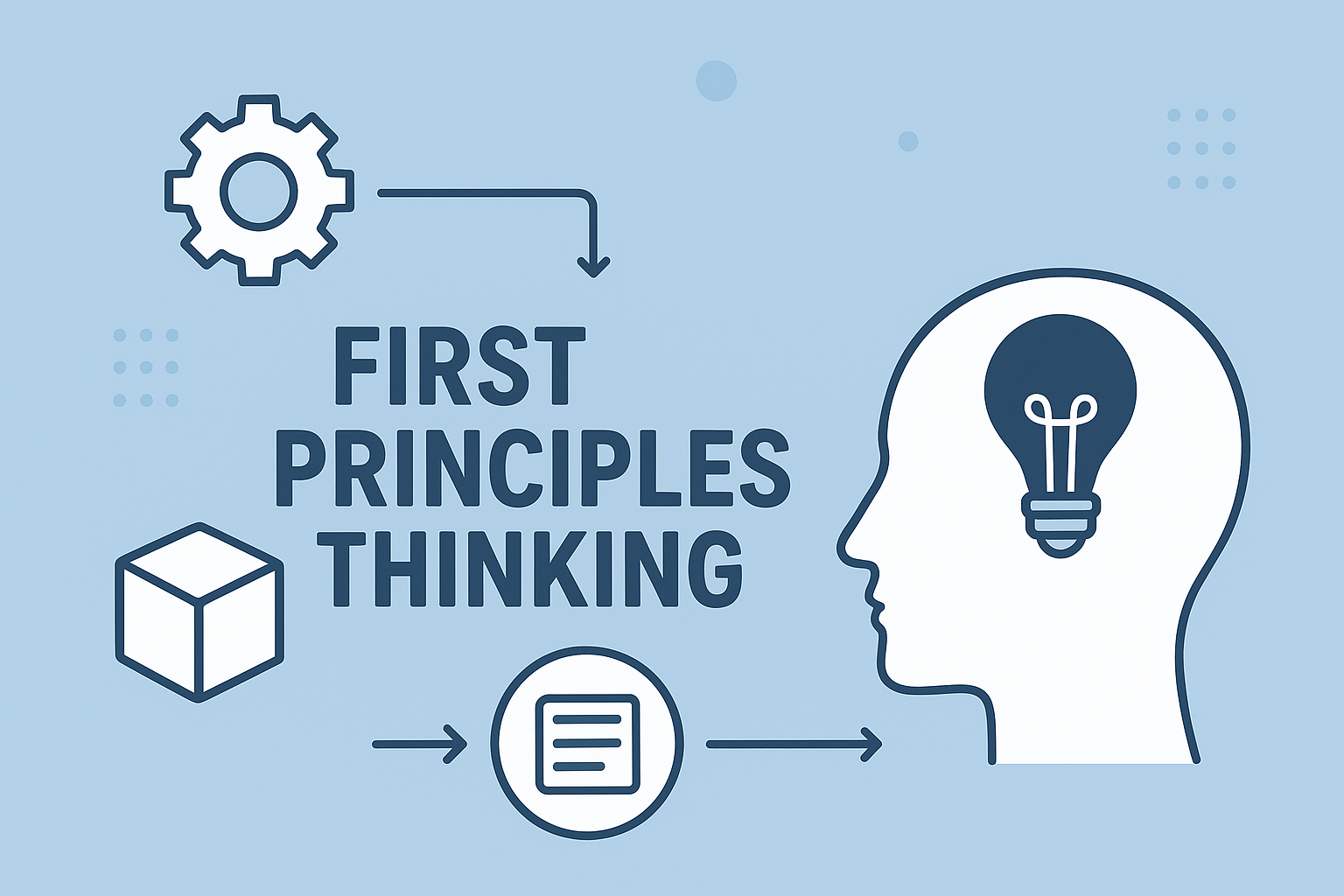
Explanation: First Principles Thinking is the practice of breaking down a complex problem into its most fundamental, undeniable truths and then reassembling a solution from that foundation, free from all assumptions.
Example: Instead of accepting the high cost of rockets, SpaceX questioned what a rocket is physically made of (raw materials) and found a far cheaper way to build one from the ground up.
Insight: The most powerful insight is that this model forces you to differentiate what is actually true from what is just convention, which is the only path to true innovation rather than mere imitation.
The “Why” Behind the “What”: A Guide to First Principles Thinking
In management and in life, we often get stuck. We hit a wall on a project, our team’s growth flatlines, or we find ourselves just slightly improving a product when a competitor is lapping us. This “stuck-ness” almost always comes from the same root cause: we are thinking by analogy.
Thinking by analogy means we base our decisions on what others have already done. “My competitor has a 10-step checkout, so I’ll make a 9-step one.” “Every company in our industry uses that software, so we will too.” It’s an easy, energy-saving way to think, but it traps us in a cycle of incremental, “me-too” improvements.
First Principles Thinking is the antidote.
This cognitive model, championed by thinkers from the philosopher Aristotle to the entrepreneur Elon Musk, is a method for deconstructing problems to find truth. It’s about a simple, two-step process:
- Deconstruct: Identify your problem and break it down until you are left with only the most fundamental, objective truths—the things you know are true, not the things you assume are true.
- Reconstruct: From that foundation of core truths, build a new solution.
Let’s use a simpler example than rockets. Imagine you’re a manager, and your team’s “truth” is “Our customer service is too slow.”
Thinking by Analogy: “Our competitor answers the phone in 3 rings, but we take 5 rings. We must hire more people to answer the phone in 3 rings.” You are just copying the form of the solution.
Thinking by First Principles:
• Deconstruct: What is the first principle of customer service? It is a customer has a problem, and they want it solved.
• Questioning Assumptions: Does it have to be a phone call? Is the “ring count” the real problem? No, the problem is the unsolved issue.
• Reconstruct: If the goal is just “solve the problem,” you can build a new solution. Maybe the solution is an AI chatbot that resolves 80% of issues instantly.
Maybe it’s a proactive email system that alerts customers to a problem before they call.
Suddenly, you are no longer in a race to hire more people. You’ve changed the game.
This as the most critical skill for leaders – our brains are lazy and they love shortcuts. First Principles Thinking is a “mental workout.” It requires you to be the person in the room who has the courage to ask the “stupid” question: “Why are we doing this?” or “What is actually true here?”
You can apply this everywhere. Don’t just “look for a new job.” Deconstruct your career. What are the first principles? “I need an income,” “I am skilled at communication,” “I enjoy solving puzzles.” When you build from those truths, you might find your next role isn’t a “job” at all, but a new business.
This is the power of the model. It’s the engine of true innovation. It allows you to step out of the “what is” and start building the “what could be.”
